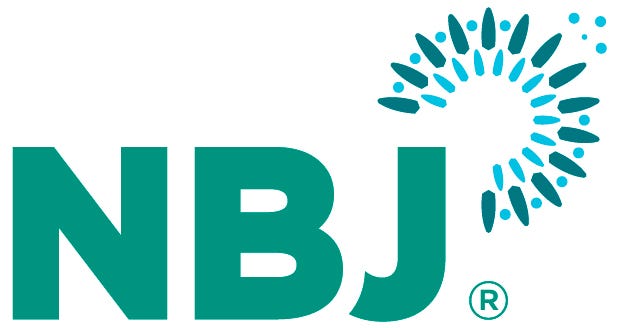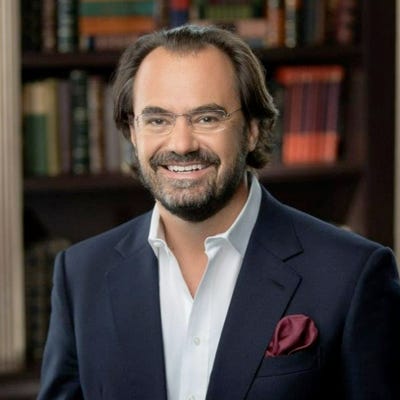November 14, 2024

This article originally appeared in the Nutrition Business Journal Finance Issue.
As part of my annual talk about the state of financial markets and mergers and acquisitions at July’s NBJ Summit, I have shown the same slide every year for the past three years, each time with a different variation of the same picture. In 2022, the picture was of a ship being battered by a monster storm with no indication of when the storm would abate. In 2023, the ship was through the worst of the storm, but the sunshine was still a way off. In 2024, the ship was sailing from the stormy seas and into the clear and sunny skies ahead. These pictures are an illustration of the story of financial markets and mergers and acquisitions in the broader nutrition and VMS markets over the past three years. We are finally sailing out of the storm and into clearer and sunnier seas.
The go-go years: 2017 to 2022
From 2017 until around June 2022, it felt like there was a fantastic outcome for any business with scale and a reasonable financial profile. The large corporates like Nestlé and Unilever were going tit for tat, each announcing a new deal every three to six months. Private equity was also actively looking for deals in the space, but more often than not being blown out of the water on valuation by the large corporates. Much of this activity was driven by disruption, including digital sales and marketing models and businesses that targeted the younger millennial and Gen Z demographics. Names like Liquid I.V., Olly, Orgain, Nutrafol and Vital Proteins that did not exist in 2010 were each acquired for hundreds of millions of dollars, and many are now household names. These were very good years for financial markets and mergers and acquisitions, although irrational exuberance did rear its head in places.
The storm is upon us: 2022 to 2024
The world changed during the first half of 2022 with a rapid and unforeseen rise in inflation and a resulting rise in interest rates that would continue to climb through mid-2023, holding at a historic high before a long-awaited rate cut in September 2024. The impact on mergers and acquisitions was dramatic, with a slowdown across the board. Activity has since been sporadic, with no single corporate buyer standing out from the pack. Neither Nestlé nor Unilever has effected a wellness transaction since the first half of 2022, more than two years ago. The few corporate transactions that we have seen each had unique circumstances. Sanofi’s acquisition of Qunol in 2023 was driven by a desire to show the financial community that a newly spun consumer health unit could drive growth through acquisitions (Sanofi has still not achieved its publicly stated goal of separating the business through an IPO or sale to private equity). Pharmavite’s acquisition of Bonafide at the end of 2023 for $425 million was driven by a race to dominate women’s health as well as a highly valuable body of clinical evidence and IP. Kirin’s acquisition of Blackmore’s was driven by geographic ambitions in the Asia pacific region. Similarly with private equity, activity has been muted, with few announced transactions. The most notable is L-Catterton’s acquisition of Thorne for $680 million in 2023, a bold move by private equity to acquire a leader in the newly fashionable practitioner channel. (Gryphon investors acquired Metagenics in 2021 and RoundTable Healthcare Partners acquired Designs for Health in 2021.)
This muted lack of activity was not for lack of demand or effort to sell. The line of scale disruptive businesses that have sought to achieve an exit or likely desire an exit due to institutional investor and/or founder dynamics is longer than ever. Some settled for alternative transactions to achieve short-term goals. For example, Mary Ruth’s Organics and Goli both announced transactions in 2024 involving existing owners and investors.
State of play
The good news is that the future now appears to be as clear and bright as at any point during the last two and a half years. Firstly, the down cycle in M&A is very long in the tooth, by any historical measure; secondly, the category has finally put its COVID and inflation disruption behind it; and thirdly, on Sept. 18, the Federal Reserve announced that it was cutting rates by 50 basis points. On the M&A supply side, many sellers who have tried and failed or who have been waiting on the sidelines for a better market are likely to want to try to effect an exit over the next 18 to 24 months. Our level of engaged mandates and dialogue for potential new mandates is at the highest point since the end of 2021. We know the same to be true of many of our peers. The question is whether the demand side of the equation will be equally robust.
Cautious corporates
Despite improving industry dynamics, improving performance for existing brands and an improving M&A market, the corporate universe remains cautious. Much of this caution comes from the internal dynamics of the buyers in question. Many of them have undergone leadership changes at the mothership and/or business unit level. No new leader wants to bet their new job and reputation on overpaying for a speculative transaction. Nestlé, Unilever, Bayer and RB, for example, have all experienced CEO changes over the past 24 months. Other corporates, such as Haleon and Kenvue, are newly public and therefore want to proceed carefully as they reduce the debt they took on to gain their independence and because their investors are scrutinizing their every move. And some are very happy with the current performance of their existing brands and do not want to risk their good standing with a speculative transaction.
All of the lead players are certainly open for business and reviewing opportunities, but the bar is very high for “going all in” on a deal. The fit has to be clear and strong. Fit may be defined as category or segment fit, target demographic fit, channel of distribution fit or financial profile fit. From a high level, profit is very important, science is valued at a premium, focus is important and channel diversity is considered less risky. We do anticipate that the corporate universe will continue to come back to the table gradually throughout 2025 and 2026.
Primed private equity
Private equity appears primed to get back to business. There is more committed capital available for deals than at any point in history. Interest rates have begun a downward cycle, which will lower the cost of capital and therefore the cost of the debt or leverage that private equity firms put on businesses in a transaction. The degree to which they lean in to mergers and acquisitions in nutrition and VMS will depend upon their view of the category and business in question. For example, many firms have been viewing young, high-growth and single-channel businesses with a degree of skepticism over the past 24 months, while they have been valuing history, stability and certainty of future cash flows. However, we are seeing an uptick in dialogue and desire around the category as a whole and expect activity to pick up nicely.
The only way is up
While we won’t be returning to the “go, go” days of 2017 to 2021 any time soon, we do expect the outlook for mergers and acquisitions in the nutrition and VMS markets to continue to improve. We expect to see a higher number of interesting transactions in 2025 than we did in 2023 or 2024. However, the eye of the acquirer will be sharp, and quality, profits and stability will continue to be valued over growth at any cost and surface-level excitement.
Subscribe today to the Nutrition Business Journal.
Read more about:
IdeaXchangeAbout the Author
You May Also Like




.jpg?width=700&auto=webp&quality=80&disable=upscale)

.png?width=700&auto=webp&quality=80&disable=upscale)